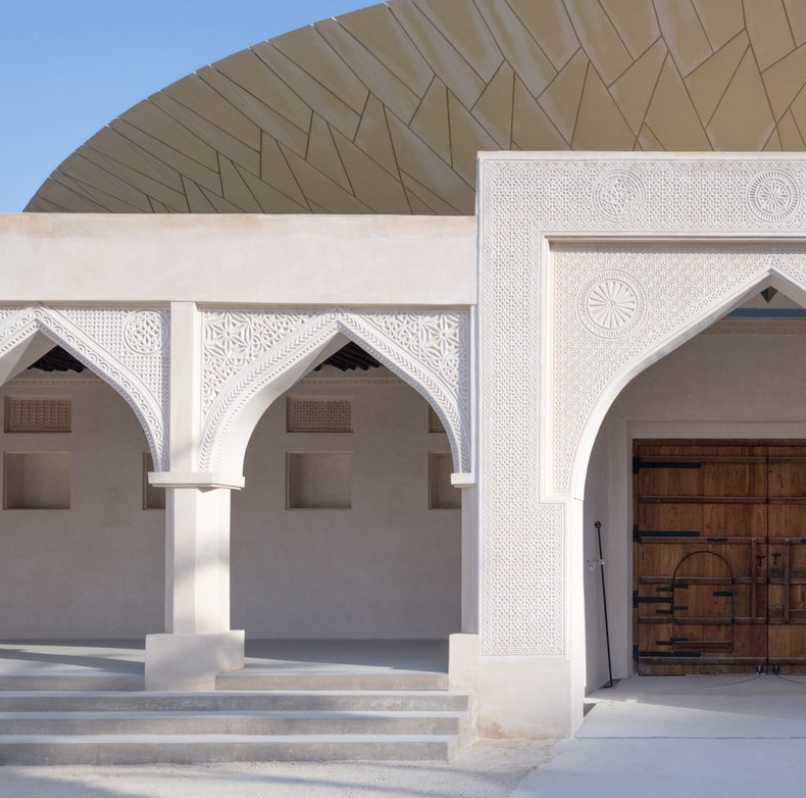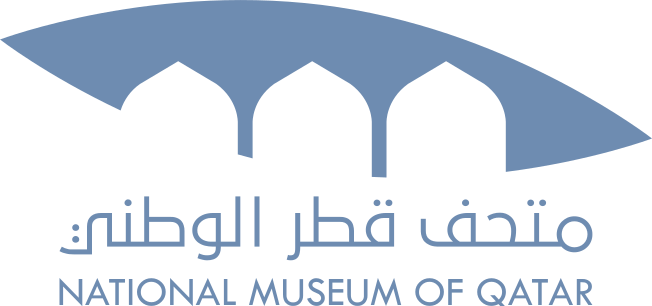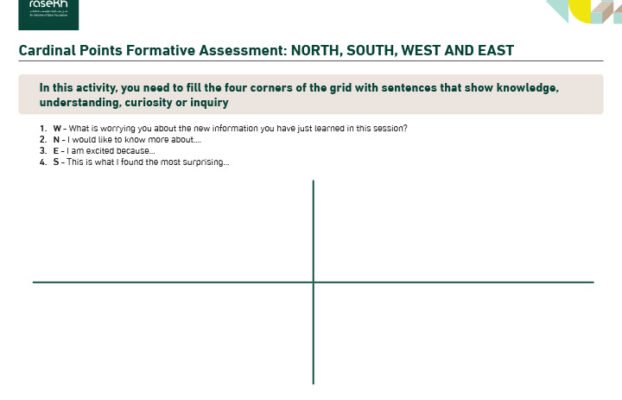Historical Resources
People of Qatar: Heritage, Identity and Culture
-
Culture and Heritage
QNV 2030: Human Development, Social Development
-
Resource Plan
-
SDG 11: Sustainable Cities and Communities
-
16 - 17, 17 - 18 years
-
Language(s), Media Studies, Qatar History, Social Studies
-
Resource ID: 15515
- Share Feedback Embed Resource

Overarching Goal(s)
- To nurture learners as global citizens who are connected to their own national identity.
- To inspire students to act in local/global sustainable ways.
Learning Outcomes
- Learners analyze and interpret the diversity of opinions and ideas relating to glocalization within both local and global contextual and conceptual frameworks.
- Learners consider, contrast, and compare their local heritage and identity within the context of global issues with local impact, and local issues with global impact.
- Learners discuss, plan and evaluate learner initiated action using sustainable approaches.
- Learners embrace meaningful action through student agency.
- Learners develop life long skills which support their sustainable actions.
- Learners reflect on the impact of their actions and demonstrate their understanding of the action as related to sustainability.
Possible Duration (Hours)
5 hours
Qatar National Vision 2030 Connection
Qatar National Vision 2030:
Human Development: Development of all Qatar’s people to enable them to sustain a prosperous society.
Social Development: Development of a just and caring society based on high moral standards, and capable of playing a significant role in the global partnership for development.
English: https://www.gco.gov.qa/en/about-qatar/national-vision2030/
Arabic: https://www.gco.gov.qa/ar/about-qatar/national-vision2030/
Source: Government Communications Office (2023). Qatar National Vision 2030. [online] Government Communications Office. Available at: https://www.gco.gov.qa/en/about-qatar/national-vision2030/
Sustainable Development Goals (SDGs) Connection
SDG 11: Sustainable Cities and Communities: By exploring cultural heritage and the importance of preserving it, students can gain an understanding of how communities can be more sustainable.
The 17 Sustainable Development Goals, United Nations
English: https://sdgs.un.org/goals
Arabic: https://sdgs.un.org/ar/goals
United Nations (2024). The 17 Sustainable Development Goals. [online] United Nations. Available at: https://sdgs.un.org/goals.
Action Learning Outcomes
- Learners become more aware of their own strengths and areas for growth:
- Learners undertake challenges that develop new skills:
- Learners discuss, evaluate and plan student-initiated activities.
Content
This resource plan explores the rich tapestry of cultural, historical, and national identity of the people of Qatar as presented in the “People of Qatar” exhibition at the National Museum of Qatar (NMoQ). Students will delve into how heritage, culture, and identity have evolved in Qatar over time, focusing on the balance between tradition and modernity.
Nomadic and Seafaring Lifestyles: Students will examine the traditional ways of life in Qatar, including the adaptation to the desert environment and the dual existence between land and sea, which were integral to early Qatari society.
Role in Regional Trade Networks: Exploration of Qatar’s historical position within ancient trade routes, highlighting its significance in connecting the East and West.
Impact of Oil Discovery: Understanding the transformative effects of oil on Qatar’s economy, society, and the rapid shift from a traditional to a modern urban society.
Cultural Heritage and Modernization: Analyzing how Qatar has managed to preserve its cultural heritage amidst the pressures of modernization, aligning with the objectives of Qatar National Vision 2030.
Primary Sources Exploration: Utilization of vintage photographs, oral histories, and museum artifacts to gain insight into the evolution of Qatari identity.
Inquiry-Based Learning: Students will engage in critical discussions and multimedia presentations to reflect on the ongoing process of cultural evolution in Qatar.
Global Citizenship and Sustainability: Connecting local heritage with global issues, students will consider the implications of preserving cultural heritage in a globalizing world.
Resource Utilization: Use of digital archives, virtual tours, and interactive exhibits to make learning dynamic and engaging, fostering a deeper appreciation of Qatar’s cultural identity.
This content aims to nurture a comprehensive understanding of Qatar’s cultural evolution and its relevance to global citizenship, encouraging students to critically engage with the preservation of cultural heritage in a rapidly changing world.
Strategies
- Responsive and Adaptive Pedagogy: Flexibility in teaching methods based on student feedback and engagement levels.
- Visible Thinking Routines: Using visual stimuli from the museum to develop critical thinking and inquiry.
- Inquiry: Encouraging students to ask questions and research beyond the provided materials.
- Collaboration: Group discussions and projects based on museum resources.
- Assessment for and as Learning: Continuous assessment through group discussions and individual reflections.
- Problem-Solving: Assignments that require analytical skills, using museum exhibits as case studies.
- Active Learning: Interactive tours and hands-on activities with museum exhibits.
Learning Experiences
Learning Engagement: Task: Collaborative multimedia presentation and conference style presentation relating to Qatari Heritage
Students will create a comprehensive multimedia presentation that showcases their understanding of Qatari heritage and identity, highlighting the connections between local history and global sustainability. The presentation should reflect an in-depth exploration of Qatar’s past, present, and future aspirations, with a focus on positive aspects of the culture and heritage.
Purpose:
- To deepen understanding of Qatari heritage and identity.
- To connect local heritage with global sustainability.
Outcome:
- Develop a comprehensive presentation that reflects on Qatari heritage, incorporating the values, ethics, and history observed in the museum.
Using the GRASPS Model:
The GRASPS model was developed by Grant Wiggins and Jay McTighe as part of their “Understanding by Design” (UbD) framework. It is used to design authentic assessments that align with desired learning outcomes and standards. This model helps educators create real-world scenarios where students apply their knowledge and skills to achieve specific outcomes, demonstrating understanding and proficiency in a meaningful context.
- Goal: Create a multimedia presentation that explores Qatari heritage and its evolution.
- Role: Students act as researchers and presenters.
- Audience: Presentation aimed at peers and educators from other countries.
- Situation: Utilize resources from the National Museum of Qatar.
- Product/Performance: A multimedia presentation combining historical analysis with contemporary relevance.
- Standards for Success: Clarity, depth of research, creativity in presentation, and connection to global issues.
Presentation Structure:
Introduction:
- Briefly introduce Qatar’s geographical and cultural significance.
- State the purpose of the presentation: exploring Qatari heritage and its impact on national identity and global sustainability.
Historical Overview:
- Use images, information, notes taken from the museum to outline Qatar’s historical timeline, focusing on major events and turning points.
- Highlight the traditional lifestyles, including pearling and trade.
Cultural Evolution:
- Discuss how Qatar’s culture has evolved over time.
- Include elements such as language, literature, art, and customs.
- Use video clips of elderly Qatari citizens to provide a personal perspective on cultural changes.
Values and Ethics:
- Explore the core values and ethics of Qatari society.
- How do these values reflect in Qatar’s approach to global issues?
Qatar Vision 2030:
- Explain the Qatar National Vision 2030 and its significance in shaping the country’s future.
- Connect this vision to global sustainability goals.
Global Connections:
- Illustrate how Qatar’s historical role in trade and its current global engagements have shaped its identity.
- Discuss Qatar’s contributions to global dialogues on sustainability and cultural exchange.
Personal Reflections:
- Students reflect on what they have learned about Qatari heritage and how it relates to their own identity and global citizenship.
- Discuss the importance of preserving cultural heritage in a globalized world.
Conclusion:
- Summarize key insights gained from the exploration of Qatari heritage.
- Highlight the importance of understanding and respecting diverse cultures in fostering global sustainability and peace.
Presentation Guidelines:
Duration: 10-15 minutes.
Visual Aids: Use a combination of photographs, video clips, infographics, and text which have been reviewed from the ‘People of Qatar’ section in the National Museum.
Narration: Clearly narrate each section, ensuring a coherent and engaging flow.
Interactive Element: Include a Q&A session or an interactive quiz at the end to engage the audience.
Citations: Cite all sources used, including museum exhibits, interviews, and articles.
Checking for Understanding
Assessment:
- Proposals will be evaluated based on originality, alignment with NMoQ’s objectives, feasibility, depth of research, and consideration of ethical and cultural factors.
- Assessment of presentation skills based on clarity, engagement, and effectiveness in communicating their ideas.
Key Vocabulary
cultural evolution, cultural exchange, global citizenship, global sustainability, historical narratives, historical overview, historical timeline, national identity, Qatar National Vision 2030, Qatari heritage, real-world application, responsive pedagogy, values and ethics
Resources
- Research Materials: Access to the museum’s online resources, books, articles, and videos. https://nmoq.org.qa/en/
- Technical Resources: Software for creating presentations (e.g., PowerPoint, Prezi), video editing tools, and graphic design software.
- Mentorship: Availability of a teacher or a museum educator for guidance and feedback during the project.
Resource Publisher
National Museum of Qatar (NMOQ)
The National Museum of Qatar (NMoQ) gives voice to Qatar’s rich heritage and culture. They welcome diverse communities to their vibrant and immersive space to come together to experience Qatar’s past, present, and future.










